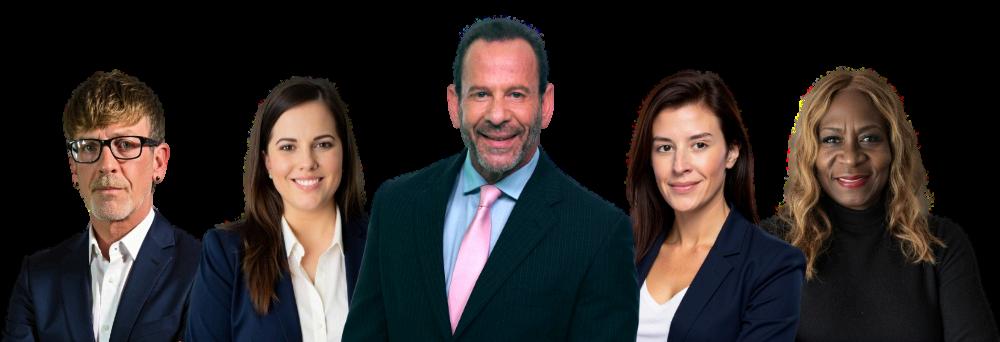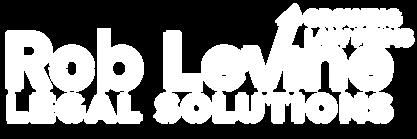

2025 PLAYBOOK: WINNING MARKETING STRATEGIES FOR LAW FIRMS

“If you’re not willing to talk about what others won’t, you’ll never be the most trusted voice in your space.”
— Marcus Sheridan

Marketing 2025 Marketing Playbook
“IF YOU’RE NOT WILLING TO TALK ABOUT WHAT OTHERS WON’T, YOU’LL NEVER BE THE MOST TRUSTED VOICE IN YOUR SPACE.”
— MARCUS SHERIDAN
Marcus Sheridan, renowned author of They Ask, You Answer and a leading authority on trust-based marketing, recently shared his insights at our Rob Levine Legal Solutions Mastermind in-person session. His expertise in client communication and relationshipbuilding directly complements our group's focus on scaling law firms through transparency and innovation. By featuring thought leaders like Marcus, our mastermind ensures members are equipped with strategies that align with our weekly accountability meetings and collaborative efforts to refine marketing approaches and firm growth initiatives.
In today’s legal landscape, trust isn’t built with flashy ads or polished slogans it’s earned through clarity, transparency, and education. Clients are no longer waiting to hear from you; they’re actively searching for answers, comparing firms, and making decisions before you ever pick up the phone. That’s why this guide is built on the proven strategies of Marcus Sheridan one of the most respected voices in content marketing. What follows is a step-by-step framework tailored specifically for personal

injury law firms, designed to help you attract more qualified leads, convert them faster, and position your firm as the most trusted voice in your market. Whether you’re an attorney, intake manager, or marketing director, these strategies will show you exactly how to turn your website, content, and team into a client-converting machine.
Everyone thinks their firm is unique.
If you’d like to watch Marcus Sheridan’s full 4-hour presentation and dive deeper into the strategies covered here, you can watch it now by clicking here: l injury law firms, designed to help you attract more qualified leads, convert them faster, and position your firm as the most trusted voice in your market. Whether you’re an attorney, intake manager, or marketing director, these strategies will show you exactly how to turn your website, content, and team into a client-converting machine. Everyone thinks their firm is unique.
If you’d like to watch Marcus Sheridan’s full 4-hour presentation and dive deeper into the strategies covered here, you can watch it now by clicking here: https://youtu.be/qyUEeXvTYNM
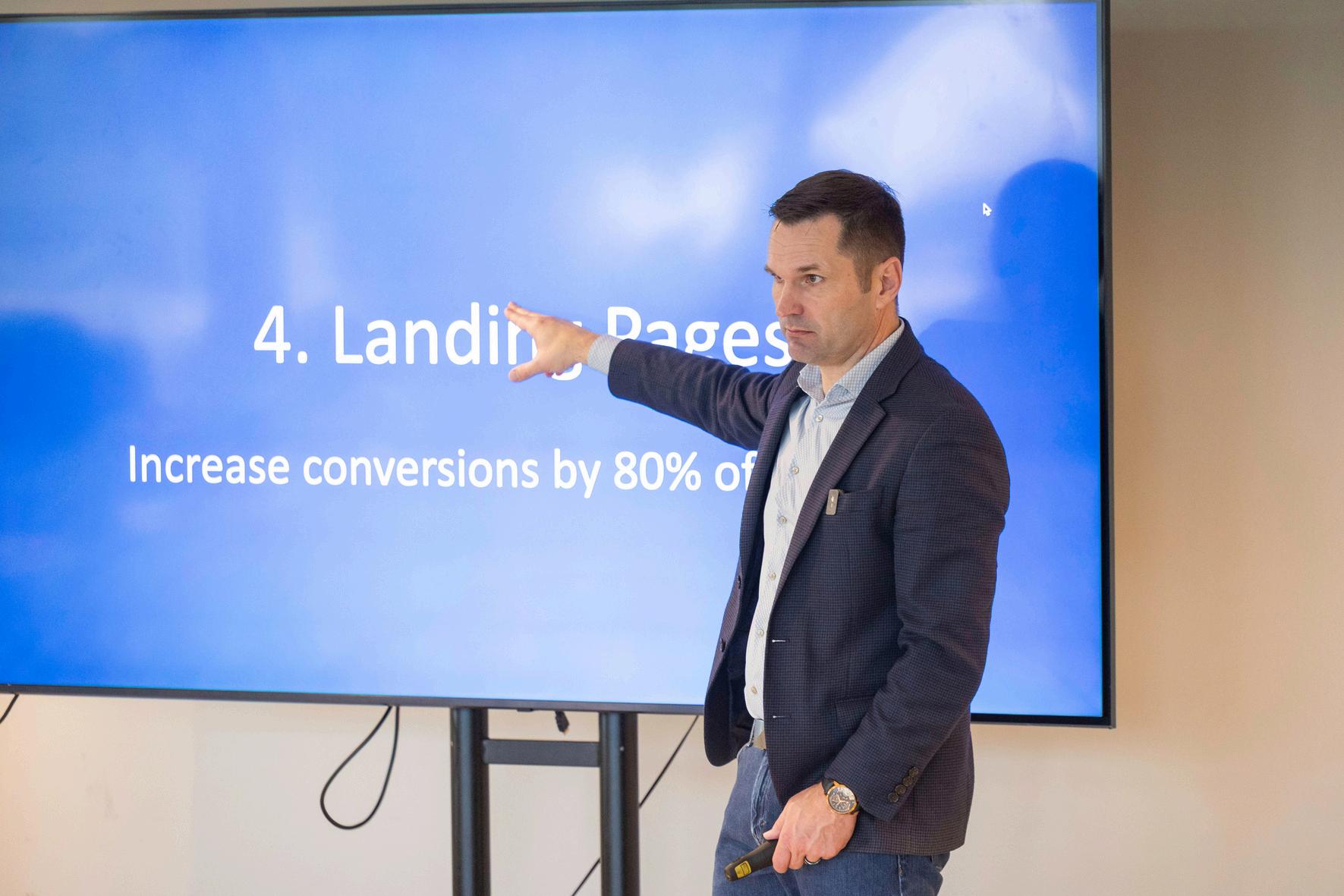


Frustrations Faced
1. Not Reaching Enough Potential Clients
Firms felt they weren’t connecting with enough prospects online, even with efforts in place.
Contributing issues: SEO performance, lack of consistent outreach, poor targeting.
2. Too Many Marketing Channels to Juggle
SEO, referral outreach, community marketing, ad management, and intake — all require attention, but firms often lack the capacity to manage them all well.
3. High Lead Volume, Low Conversion
Many firms said they were getting contacts but not converting them into clients.
One issue was the lack of speed in following up, with some firms admitting it takes days to call back leads.
4. Slow Lead Response Times (The “5Minute Rule” Violation)
Marcus emphasized that not calling leads lose them forever — and most firms admitted they’re not doing this.
Sheridan said the first firm to talk to the lead gets hired 75% of the time.
5.Competition from Larger, Regional Firms
Smaller PI firms felt that regional and national players were “stealing cases” by outspending them on ads and driving up lead costs.
This left firms feeling like they were constantly reacting instead of leading.
6. Poor Lead Quality (Unqualified or Not Serious Clients)
Intake teams expressed frustration about receiving leads who weren’t actually eligible or serious — suggesting messaging and targeting misalignment in their marketing.

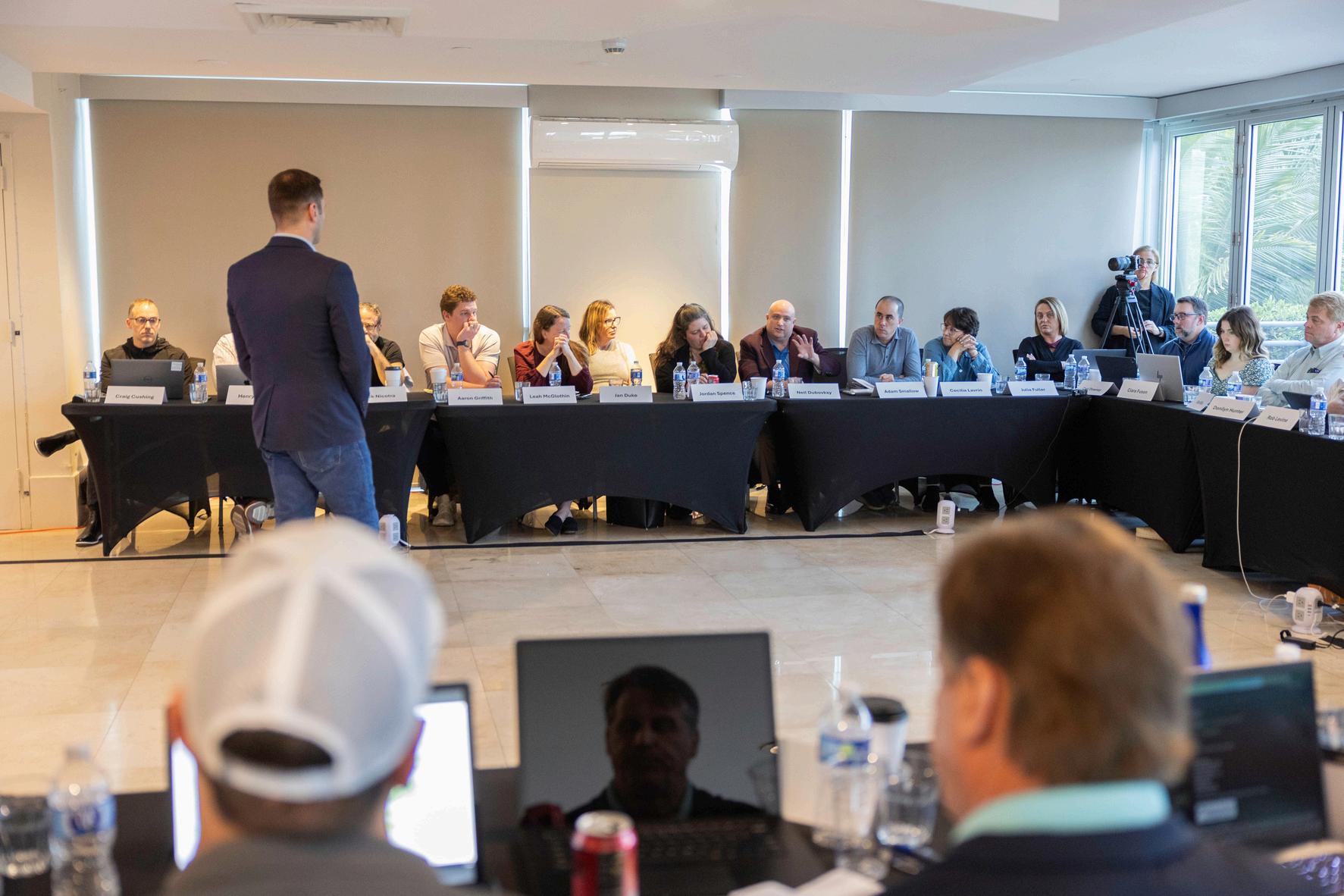
THE STEPS
Adopt the Mindset
— You’re a Teacher, Not Just a Lawyer STEP 1
Strategy: Stop trying to “sell” and start teaching clients better than any firm in your market.
Why It Works: Clients are 80% through their decision-making process before they ever call you. That means they’re searching, comparing, and judging you before you even know they exist.
Actionable Items:
Think of your firm as a media company that publishes helpful, educational legal content. Assign internal team members to content creation—even if it's just one marketer or assistant at first.
Shift your website from “here’s what we do” to “here’s what you need to know.”
Example Content:
A Learning Center homepage that says:
“Have a legal question? We’ve answered it here — clearly and honestly.”
About page that reads more like:
“We’re here to guide you through one of the most stressful moments in your life — not sell you legal jargon.”
Tip: Your clients have never done this before. You’ve done it a hundred times. Your job isn’t to impress them with legal talk — it’s to teach them what to expect in plain English. The moment you start thinking like a teacher, you’ll become the firm they trust the most.
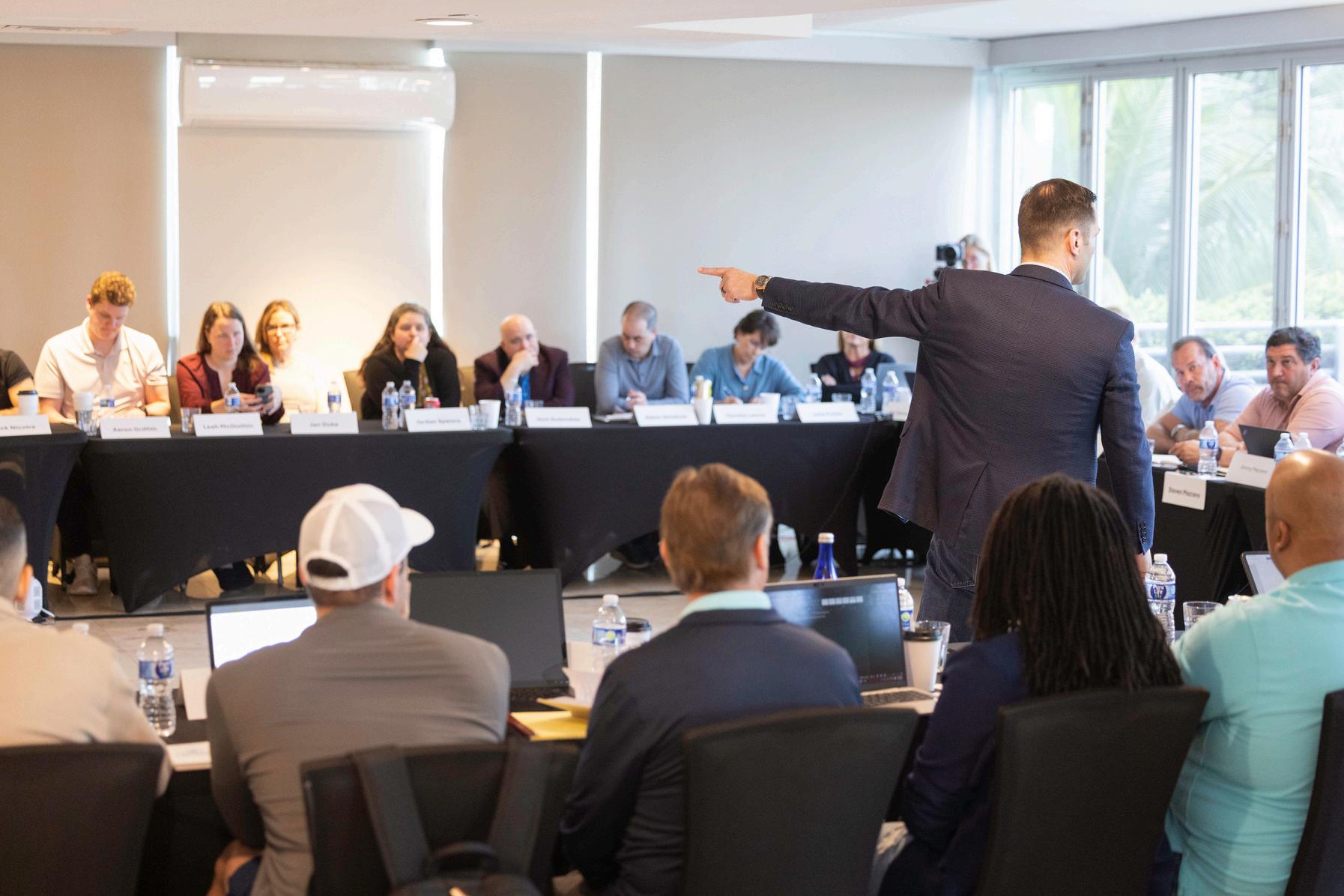
Strategy: Make a list of every single question a potential client asks—especially about money, timelines, risk, outcomes, and what to expect.
Why It Works: Every one of those questions is a content opportunity. If you're not answering it online, they’ll learn it from someone else—or worse, from a competitor.
Actionable Items:
Ask your intake team: “What 10 questions do we get in every call?”
Use client emails, reviews, and chat logs to collect language your clients actually use. Use tools like ChatGPT’s “deep research” feature to gather common online queries.
Example Content:
Article: “How Long Will My Personal Injury Case Take in Georgia?”
Video: “Can I Still File If I Was Partially at Fault?”
FAQ: “Do I Have to Pay Anything If I Lose?”
Tip: Don’t guess what your clients are worried about — ask your intake staff. They know. Every call, every DM, every consult question is a content opportunity. If you hear, ‘How long will this take?’ 10 times a week, that’s your next blog post and video.
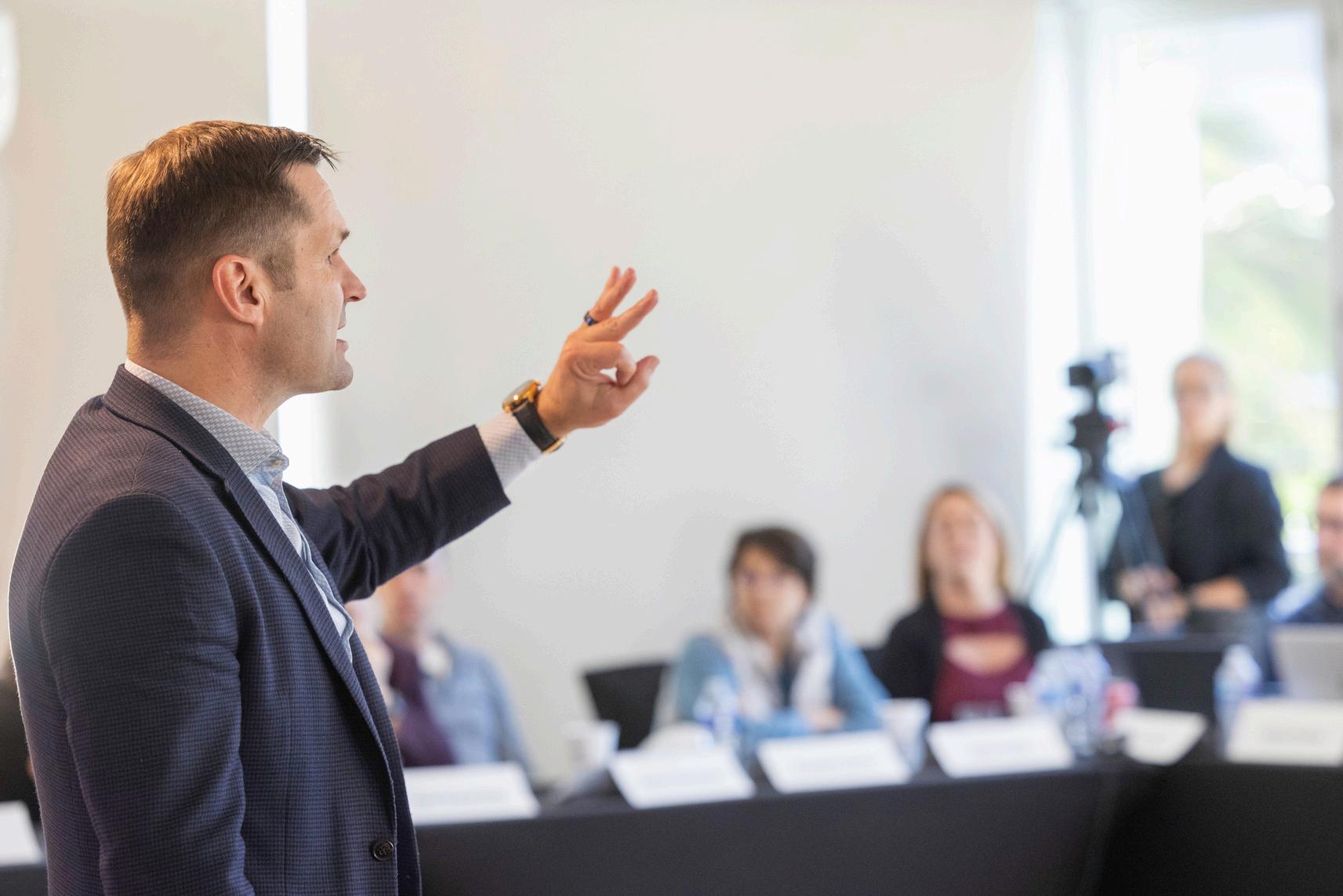
3
Create Content Around The Big 5
The “Big 5” are the five content categories that consumers research the most before making a buying decision. Marcus Sheridan emphasizes that these are non-negotiable if you want to build trust, dominate search rankings, and close more clients.
Each category targets high-intent traffic—people actively researching solutions and law firms. Here’s why each one matters and how to apply it.
1. Cost
Cost is the #1 question buyers have—and the least addressed on most law firm websites. People want to know what they’ll owe, when they’ll owe it, and what’s fair. Ignoring it creates skepticism and sends them to your competitors. Write articles like:
“What Percentage Does a Personal Injury Lawyer Take in Florida?”
“Is It Really ‘No Win, No Fee’? What You’re Not Being Told” Include ranges, fee structures (contingency, hourly, etc.), and real examples. Be transparent: explain why fees are set up the way they are.
Tip: You don’t need to give an exact number—but you do need to explain how pricing works and what affects it. If you don’t, Google won’t reward you—and buyers won’t trust you.

Create content like:
“5 Mistakes That Can Wreck Your Personal Injury Case”
“Why Some Injury Lawyers Turn Down Cases”
Be upfront about things like unrealistic expectations, medical liens, or bad evidence. Position yourself as a guide helping clients avoid these pitfalls.
Tip: The best brands say, ‘Here are the problems—and how to avoid them.’ Clients want a guide through the minefield, not a cheerleader.
3. Comparisons
Why It’s Important:
People are comparing you vs. other firms—whether you acknowledge it or not. By guiding those comparisons, you shape how you're perceived. It positions you as objective, fair, and confident in your value.
How to Use It:
Write pieces like:
“Big Law Firm vs. Small Law Firm: Which Is Better for Your PI Case?”
“Trial vs. Settlement: What’s Best for You?”
“Should You Represent Yourself or Hire a Lawyer?”
Include side-by-side pros and cons.
Be honest if another option might be better for a certain kind of client.
Tip: The brand that’s most willing to say, ‘We might not be the right fit,’ is the brand buyers end up trusting the most.

How to Use It:
Write articles like:
“How to Read Lawyer Reviews Without Getting Misled”
“Client Reviews of [Your Firm]: What Real Clients Say”
“Why We Respond to Every Review—Good or Bad”
Feature authentic testimonials (text, video, screenshots).
Talk about what great and bad reviews usually mean.
5. Best-of Lists
Tip: Most firms bury their reviews on a subpage. Make them visible. Use them to tell stories. Clients don’t trust stars—they trust people.
Why It’s Important:
“Best [service] in [city]” is one of the highest-converting local search queries. If you create the list, you control the conversation—even when prospects are researching competitors.
It’s a high-trust, high-traffic content strategy.
How to Use It:
Write pieces like:
“Top 5 Personal Injury Lawyers in Nashville (2025 Update)”
“Best Car Accident Attorneys in San Diego — And What Sets Them Apart”
List firms fairly and include transparent criteria.
Add yourself to the list, but don’t put yourself at the top just because you wrote it—that kills credibility.
Why It Works: Most PI firms avoid these topics because they seem uncomfortable or risky. But that’s exactly why they work—they build trust by answering what others won’t.

Make your content long (1,000–2,000 words) and specific.
Examples Content by Category:
Cost
What Does a Personal Injury Lawyer Actually Cost in [City/State]? (Exact Fees Explained)
How Much of My Settlement Will My Lawyer Take in [City/State]?
Average Settlement Amounts for Car Accidents in [City/State]: How Much Goes to Lawyers?
Hidden Costs of Hiring a Personal Injury Attorney in [City/State] (What Nobody Tells You)
Are There Any Upfront Costs for Personal Injury Lawyers in [City/State]?
Contingency Fees Explained: How Injury Attorneys in [City/State] Actually Get Paid
Is Hiring a Top Personal Injury Attorney Worth the Cost in [City/State]? (Case Studies & Examples)
How to Avoid Being Overcharged by Personal Injury Attorneys in [City/State]
What Happens if You Lose Your Personal Injury Case in [City/State]? (Cost Breakdown)
Why 'No Win, No Fee' Could Cost You More: Personal Injury Lawyers in [City/State]
Personal Injury Attorney Fees in [City/State]: How to Know If You're Getting a Good Deal
Settlement Calculators: How Accurate Are They in Estimating Your Injury Case Value in [City/State]?
Medical Bills and Lawyer Fees: How Much Will You Actually Keep in [City/State]?
Can You Negotiate Your Personal Injury Attorney’s Fee in [City/State]?
Understanding 'No-Fee Guarantees' Offered by Injury Attorneys in [City/State] (Pros and Cons)

How Social Media Posts Can Damage Your Personal Injury Case in [City/State]
Settling Too Early: How Personal Injury Victims in [City/State] Lose Thousands
Liability Disputes: What to Do When Fault Isn’t Clear in Your [City/State] Accident Case Why Lawyers Drop Personal Injury Cases in [City/State]: Common Reasons Explained Is Your Doctor Hurting Your Injury Case in [City/State]? (Red Flags to Watch Out For) Missed Deadlines: Critical Filing Dates Every Injury Victim Must Know in [City/State] What Happens If You’re Partially at Fault for an Accident in [City/State]?
Can Your Pre-existing Injury Ruin Your Case in [City/State]? (Legal Insights)
Comparisons
Big Law Firms vs. Small Personal Injury Firms in [City/State]: Which Is Better?
Car Accident vs. Truck Accident Claims in [City/State]: What's the Difference?
Hiring a Personal Injury Lawyer vs. Self-Representation in [City/State] Settlement vs. Trial: Which Route is Better for Personal Injury Cases in [City/State]?
Personal Injury Attorney vs. General Practice Lawyer in [City/State]: Who Should You Choose?
Comparing Injury Settlements: Car Accident vs. Motorcycle Accident Payouts in [City/State] How Personal Injury Laws Differ Between [City 1] and [City 2]
Hiring Local vs. Out-of-Town Personal Injury Lawyers in [City/State]: Does It Matter?
Mediation vs. Litigation: How Should You Resolve Your Injury Case in [City/State]?
Insurance Company Offers vs. Attorney Negotiated Settlements in [City/State] (Examples & Stats)
Public Defender vs. Private Injury Attorney: What's the Difference in [City/State]?
Pain and Suffering Compensation: How [City/State] Compares to Other States
Quick Settlement vs. Maximum Compensation: Pros and Cons for Injury Victims in [City/State]
Attorney Experience: Comparing Newly Licensed vs. Veteran Personal Injury Attorneys in [City/State] Injury Case Outcomes: Comparing Jury Verdicts vs. Negotiated Settlements in [City/State]

Do Negative Reviews Really Matter? Analyzing Personal Injury Lawyer Ratings in [City/State]
Real Client Testimonials: Success Stories from Personal Injury Attorneys in [City/State]
5-Star Personal Injury Attorneys in [City/State]: Do High Ratings Guarantee Good Results? How to Evaluate Online Reviews of Personal Injury Attorneys in [City/State]
Top-Rated Personal Injury Attorneys in [City/State] According to Google Reviews Case Studies: Real Injury Victims Share Their Attorney Experiences in [City/State] Fake Reviews Exposed: How Personal Injury Lawyers in [City/State] Inflate Ratings
Personal Injury Attorneys in [City/State] With the Most Authentic Client Reviews Does Reputation Matter? What Injury Victims in [City/State] Say About Their Lawyers
Best-of Lists
Who Are the Best Personal Injury Attorneys in [City/State]? (Top Rankings & Reviews)
The Top 5 Personal Injury Law Firms for Car Accidents in [City/State]
Best Resources for Accident Victims in [City/State] (Legal, Medical, Financial)
[City/State]'s Best Law Firms for Maximizing Your Injury Settlement
Top-Rated Personal Injury Attorneys for Truck Accident Claims in [City/State]
Best Personal Injury Lawyers in [City/State] According to Client Reviews
The 7 Best Personal Injury Attorneys in [City/State] for Motorcycle Accident Cases
Best Personal Injury Law Firms in [City/State] for Complex Cases (Traumatic Brain Injury, Wrongful Death)
Best Injury Attorneys for Workers' Compensation Claims in [City/State]
Highest-Rated Injury Lawyers in [City/State] Who Take Cases to Trial
Best-Ranked Law Firms in [City/State] for Fast Injury Settlements
Best Personal Injury Lawyers in [City/State] for Pedestrian Accidents
The Best Personal Injury Firms in [City/State] for Serious Injuries (Spinal Cord, Paralysis)
Best Injury Attorneys in [City/State] According to Settlement Size
Best Personal Injury Attorneys in [City/State] for Compassion and Client Care
Tip: Most injury firms avoid talking about cost, risk, and competitors. That’s a mistake. The firm that’s most honest about the hard stuff will win the most trust — and the best cases.
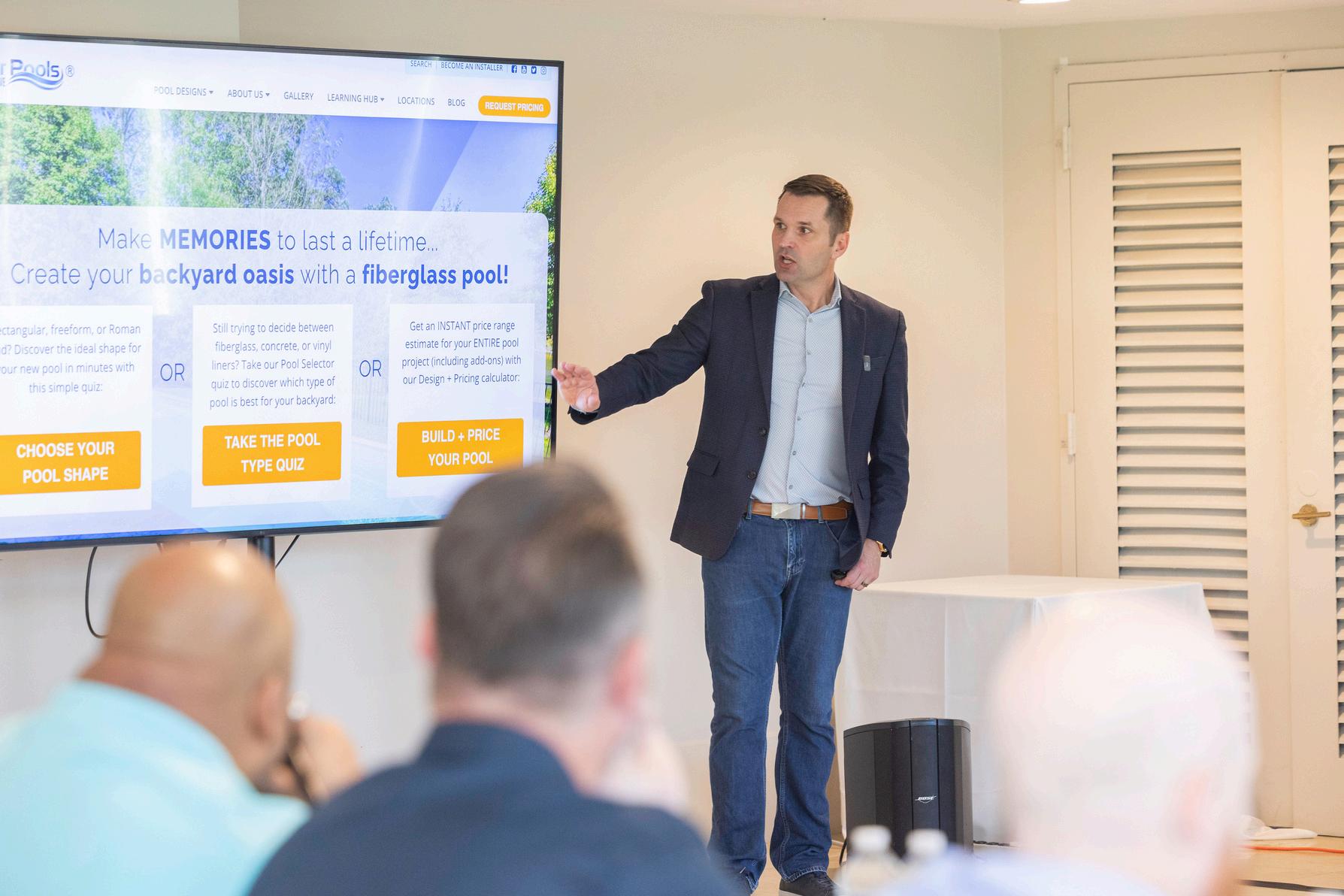
STEP 4
Build a Learning Center on Your Website
Strategy: Don’t just have a blog—create a structured, searchable Learning Center for your clients.
Why It Works: A Learning Center shows you’re the most helpful, trusted voice in your space. It keeps users on your site longer and supports better SEO performance.
Actionable Items:
Organize content by topic: “Car Accidents,” “Slip and Fall,” “Truck Accidents,” etc. Include video libraries, FAQs, checklists, and case studies. Feature it clearly on your homepage (“View Our Legal Learning Center”).
Example Content:
Main landing page with categories like:
“Start Here: What to Do After a Car Accident”
“How Contingency Fees Work”
“Common Case Timelines Explained”
Searchable FAQ database
Sidebar filters by practice area or injury type
Tip: Blogs are for marketers. Learning Centers are for buyers. Turn your website into the best resource on personal injury law in your city — and Google will reward you for it.


STEP 5
Use Video Everywhere — Especially in Sales
Strategy: Video is the fastest trust builder in marketing today. It shows tone, clarity, empathy, and confidence — qualities every personal injury client wants to see before making that first call. It also answers questions people are too nervous or busy to ask.
Most importantly, video shortens the sales cycle by making clients feel like they already know you before they speak to you. Produce short, clear videos answering common client concerns and embed them throughout your site and emails.
Why It Works: 82% of web content consumed in 2025 is video. People trust what they can see and hear. Video builds instant credibility and pre-sells your firm.
Actionable Items:
1. What Happens When You Fill Out This Form
Why It’s Important:
This is one of the most powerful videos a business can create. When visitors don’t know what happens after submitting a form, they hesitate or bounce. Explaining the process removes uncertainty and increases form conversions — often by 80% or more.

2. Who It’s For & Who It’s Not For (Service Qualification Videos)
Why It’s Important:
These videos prequalify leads by setting expectations and defining who your firm helps best. Sheridan emphasized that these save time for both the prospect and your team by attracting the right clients and gently discouraging poor-fit cases.
Use It On:
Practice area pages (e.g., Car Accidents, Slip & Fall)
Email automation for intake
During Assignment Selling sequences
3. Bio Videos in Email Signatures
Why It’s Important:
The power of personalization at scale. When attorneys include short bio videos in their email signatures, they instantly build trust and familiarity. According to Sheridan, these videos get 25–30 views per month just from daily email traffic — no ads required.
Use It On:
Email signatures via tools like Wisestamp “Meet the Team” page on your website
4. Customer Journey Videos (Client Stories)
Why It’s Important:
Rather than just showing testimonials, Sheridan recommends sharing full client journey stories. These videos tell a narrative from crisis to legal resolution to new life.

Learning Center
Blog and social media
Video pages with captions
5. Claim Validation Videos (Proof-of-Promise)
Why It’s
Important:
Sheridan encourages firms to create videos that prove their marketing claims. If your firm promises “fast response times” or “clear communication,” show exactly how you do it. This removes skepticism and builds credibility in a way words on a website never could.
Use It On:
Homepage or service pages
In retargeting ad campaigns
As part of “Why Choose Us” content
Tips: Most of you have great claims on your websites — but you’re not proving them. Video lets you show, not just tell, and that’s what converts buyers today.
If a client doesn’t know what happens after they fill out your form, they won’t do it. A 60-second video saying, ‘Here’s what happens next’ will close more leads than your homepage ever will.

STEP 6
Implement “Assignment Selling”
Strategy: Sales reps (or intake staff) should send content to prospects before consultations.
Why It Works: When people read or watch before speaking with you, they’re more confident and more likely to hire. It weeds out time-wasters and improves close rates.
Actionable Items:
Email clients a “what to expect” video and FAQ before your consult. Require they view it beforehand. If they don’t, reschedule.*
Track engagement using email tools.
Example Content:
Pre-meeting email:
“Before Our Call: Please Watch This 2-Minute Video on What to Expect”
“Read This: 3 Things You Must Know Before Hiring Any PI Attorney”
Tip: If your consult starts with ‘What’s a contingency fee again?’ you’ve already lost half the battle. Send them a video before the call. Educated clients are easier to close — and better to serve.

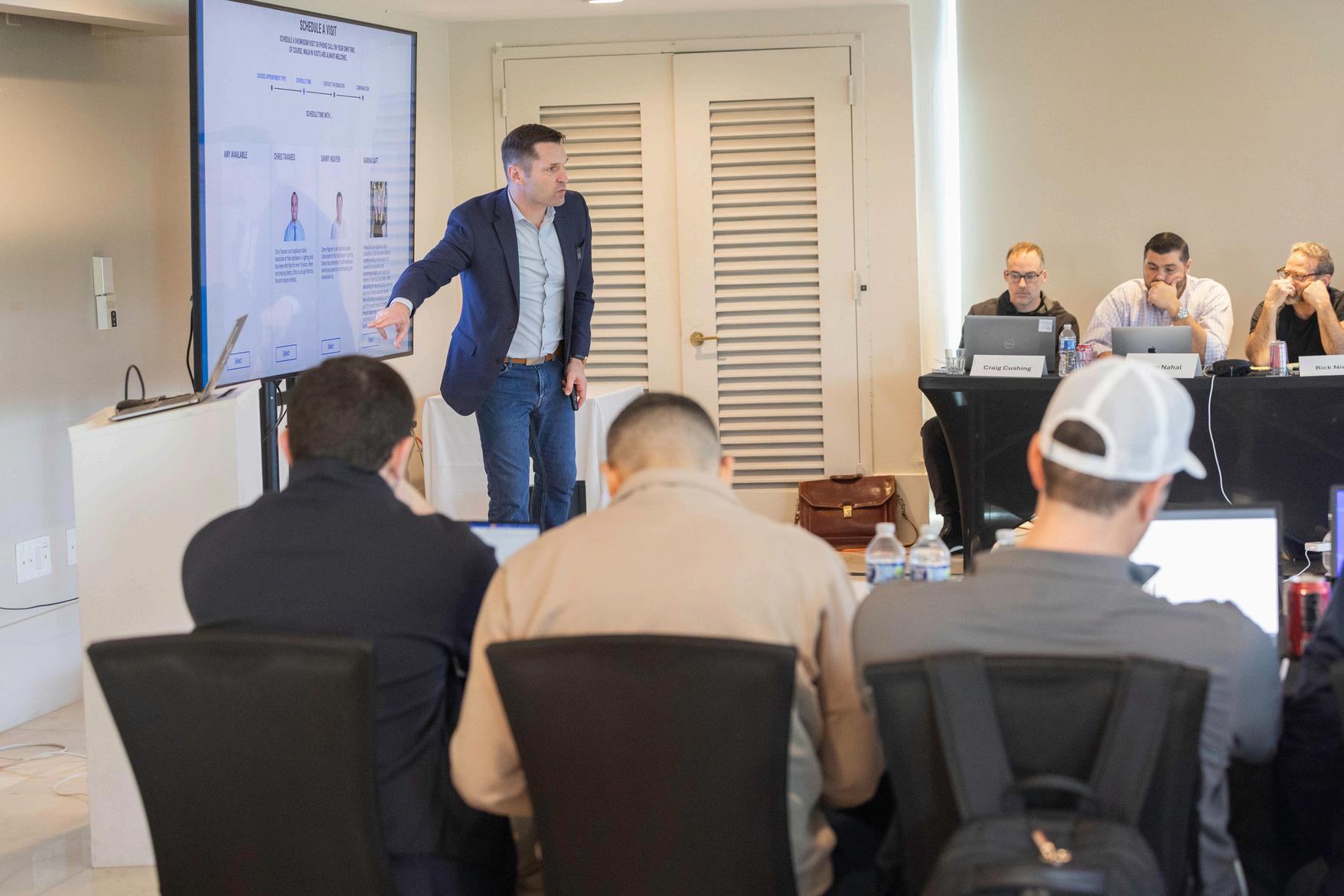
STEP 7
Create “Best of” Pages — Even With Competitors Listed
Strategy: Build pages like “Best Personal Injury Lawyers in [City]” — and list top firms (including your own, strategically).
Why It Works: When people Google “best lawyer in [city],” they’ll find your article—even if they were searching for your competitor. This makes you the one controlling the conversation.
Actionable Items:
Title examples:
“Top 5 Personal Injury Attorneys in San Antonio”
“Best Firms for Truck Accident Claims in Denver”
Don’t rank firms. Present them equally with transparent criteria. Include your own firm in the list (not always first) and explain why.
Example Content:
“Top 7 Personal Injury Lawyers in Denver (We’re Not Always #1)”
“Best Firms for Slip and Fall Cases in NYC — and Why You Might Choose Them Instead”
Tip: When someone Googles ‘best injury lawyer in Phoenix,’ you can either let your competitor show up — or write the list yourself. Control the search, control the conversation.


STEP 8
Own Every Conversation Clients Are Already Having
Strategy: Create content about everything clients search—even reviews of competitors.
Why It Works: If someone searches “Law Firm X reviews,” and your article comes up, they’ll learn about your firm in the process. You control the frame.
Actionable Items:
Write “Understanding [Competitor] Reviews: What You Should Know” Pull information directly from their website—don’t speculate. Frame the piece around helping the client make a more informed choice.
Example Content:
“Johnson & Partners Injury Law Reviews: What You Should Know Before You Hire”
“How Morgan & Morgan Compares to Local PI Lawyers in Florida”
Tip: If people are Googling ‘Johnson & Smith Law reviews,’ and your article comes up explaining who they are and how you compare, you’ve just hijacked the funnel. That’s smart content.

STEP 9
Set Up a Review System That Actually Works
Strategy: Get hundreds of 5-star Google reviews from real clients and partners.
Why It Works: Google reviews impact local search rankings, map visibility, and AI recommendations. If you’ve had 1,000 clients and don’t have 750+ reviews, your system is broken.
Actionable Items:
Ask every client to leave a review before case close. Include a QR code or link in your email signature and retainer packets. Ask vendors, referral partners, and staff for reviews too.
Example Content:
“Leave Us a Google Review” page with:
QR code
Direct link
Simple instructions
Email script:
“We’d love to hear about your experience. It helps others just like you. Click here to leave your review.”
Tip: You’ve helped hundreds — maybe thousands — of people. But if you only have 37 reviews? That’s not a marketing problem. It’s a process problem. Fix it.

Embrace AI — But Train It With Your Content
Strategy: AI (like ChatGPT or Google SGE) will shape the way people find law firms. The more your content exists, the more AI can recommend you.
Why It Works: Sheridan is launching a video chatbot version of himself for River Pools. It answers user questions using only his content. You can’t do this if you don’t publish first.
Actionable Items:
Produce high-quality written and video content now.
Focus on educational topics — not fluff.
When AI tools surface answers, make sure they’re pulling from your site, not your competitor’s.
Example Content:
Blog posts that answer:
“How Do I Know If I Have a Case?”
“What’s the Average Settlement for a Whiplash Injury?”
Videos titled:
“Understanding Comparative Fault in Texas Injury Claims”
“What Happens After You File a PI Lawsuit?”
Tip : AI doesn’t guess who’s trustworthy — it reads your content. If you’re not publishing clear answers about settlements, timelines, and client rights, AI won’t recommend you. But it’ll recommend the firm that does.

STEP 11
Improve your website
Strategy: while most firms make some effort, the majority were still making fundamental mistakes that were limiting conversions, trust, and SEO performance. Websites looked like everyone else’s and failed to truly serve the client.
Your Website is never done!
Common Mistakes:
Weak homepage content: Many sites had homepage blocks with only 2-3 vague sentences and no links to full articles or videos. Users were left unsatisfied.
Celebrating the firm, not the client: Sites often featured attorneys as the heroes. Sheridan argues that the client should be the hero, and the firm should be the guide.
Lack of social proof: Very few websites included authentic testimonials, client photos, or videos that showcased outcomes and experiences.
Overloaded homepages: Some pages were stuffed with SEO text blocks that no one reads. He said: “Homepage is not meant to teach—just get them to the next page.”
Outdated visuals: Many websites looked “old,” with dated imagery or stock content. He praised the few sites that looked modern and clean.
Untitled or vague videos: Sites had videos but with no titles or clear purpose, leading users to ignore them.
No Learning Center: Most firms only had blogs, not a structured hub where clients could educate themselves deeply (like River Pools' Learning Center).

Actionable Website Fixes for Personal Injury Law Firms
1. Link Homepage Blocks to Full Content
If you have short previews or blurbs on your homepage (like “How much does a PI lawyer cost?”), make sure they link to full, in-depth articles or videos that thoroughly answer the question. Avoid empty statements with no next step — every section should guide the visitor deeper into your site.
2. Make the Client the Hero of the Story
Rewrite your homepage and service pages to focus on the client’s journey and transformation — not your awards or how great your team is. Use “you” language instead of “we.” Talk about the client’s pain, path, and outcome. Think of your firm as the guide, not the star.
3. Add Real Social Proof
Include authentic testimonials from past clients, ideally with names, photos, or even short video clips. If you can't disclose settlement amounts, show a blurred check, or show the result without listing the number. Anything that proves real outcomes will dramatically increase trust.
4. Modernize Your Website Design
Refresh your layout, typography, and imagery. Ditch stock photos and old graphics. Clean, mobile-friendly, visually strong websites signal professionalism and credibility — often before users read a single word.

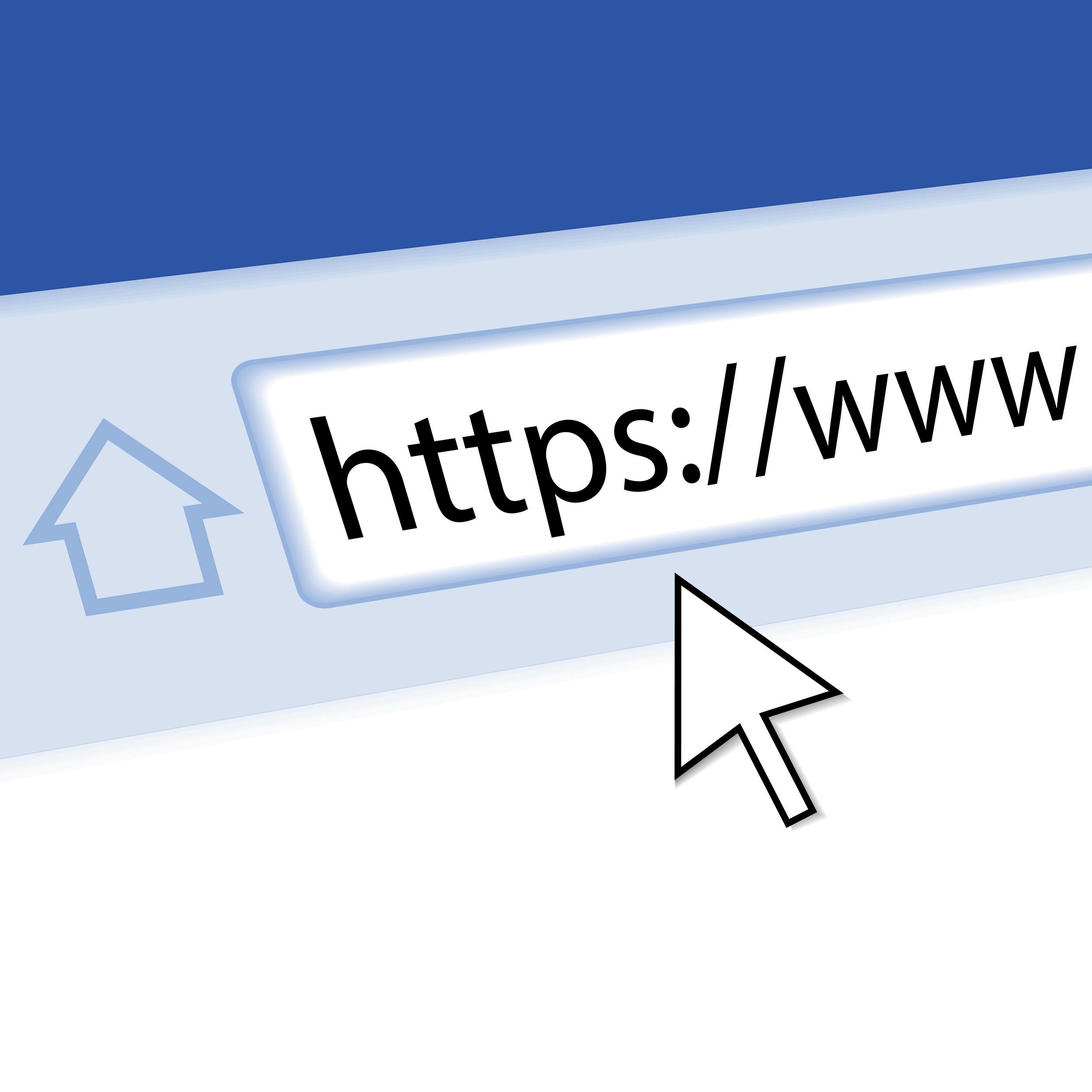
7. Create “What Happens When…” Videos
Add short videos that walk visitors through what happens when they call your office, fill out a form, or show up for a consultation. This reduces fear, increases conversions, and gives clients confidence in taking the next step. Sheridan says these kinds of videos alone can improve lead conversion by up to 80%.
Tips: The job of the homepage isn’t to teach. It’s to get people to the next step.
Be the guide, not the hero. Clients should see themselves in your story.
Consumer ignorance is not a viable marketing strategy. If they’re going to get answers, make sure they get them from you.
Your website is your first impression — and for most clients, it’s your only shot. If it looks outdated, generic, or confusing, they’re gone. You might be the best lawyer in your city, but if your site doesn’t look and sound like the most helpful expert, nobody’s going to call you.
Your site should teach better than anyone else. Period. If it’s just bragging, listing awards, and talking about yourself, you’re not building trust — you’re pushing people away.

STEP 12
Follow Up With Every Lead Within 5 Minutes
Strategy: Respond to every inbound lead — phone call, form, or chat — within five minutes or less. Every minute after that dramatically lowers your chances of converting the lead into a client.
Why It Works: Marcus cites data showing that the first firm to speak with a prospect gets hired 75% of the time. If your firm takes 20 minutes (or worse, hours) to follow up, you’ve likely already lost the case to someone else — even if you’re more qualified. “You can’t afford to be the second law firm to call. The firm that responds first, wins first.” — Marcus Sheridan
Actionable Items:
Use Call Routing or Live Answering Services to ensure all calls are picked up 24/7 — even after hours.
Set up instant alerts (texts, Slack pings, or CRM notifications) when a new form submission or web chat happens.
Create a lead response protocol for your intake team: they should aim to reply in under 3 minutes, not 30.
Leverage AI chat tools or autoresponders to provide instant feedback while your team gets ready to follow up with a real person.
Tip: Track your average lead response time weekly — and tie it to your signed-case rate. Once you see how much faster follow-up = more clients, the 5-minute rule becomes a priority, not a suggestion.

Google is dying
Traditional Google Search is rapidly being replaced by AI-driven experiences. More and more users are turning to tools like ChatGPT and zero-click search results — where users get their answers directly from the results page without clicking any links — which means fewer website visits and diminishing returns on SEO.
Strategy: With the rise of zero-click search results and AI tools like ChatGPT providing direct answers, your future visibility won’t come from rankings — it will come from the content signals you produce.
Why It Works: Google shows fewer organic results and more AI-generated summaries, fewer people are clicking on law firm websites. If your firm isn’t producing rich, trust-based content — blogs, videos, reviews, FAQs — AI tools won’t know you, recommend you, or trust you.
Every review, video, blog post, podcast, and FAQ is a signal AI will use to decide if and how to recommend you.
AI tools will recommend firms based on who has the best, most thorough content — not who paid the most for ads or ranked once upon a time.
“If you don’t create the content, AI won’t know you. And if it doesn’t know you, it won’t recommend you.” -Marcus Sheridan


Actionable Items:
Flood the internet with helpful, branded content — articles, videos, testimonials, checklists, and comparisons.
Structure your content for AI: use clear headings, question-based titles, bulleted lists, and location-specific phrasing. Track your dependence on Google Ads: begin shifting budget into content creation and distribution.
Claim and optimize all major listings (Google Business Profile, YouTube, legal directories) to increase content footprint.
Tip: Focus less on where you “rank” — and more on how many ways your name shows up when someone searches your firm, your city, or your services. Visibility is now multi-platform and multiformat.

STEP 14
Shift away from Marketing agencies
A major shift is underway: law firms and companies across industries are walking away from traditional marketing agencies — and fast.
In 2021, 30% of brands planned to leave their agency within six months.
In 2022, that number rose to 38%.
In 2023, it jumped to 55% — meaning more than half were ready to cut ties
In-House Tools Are Better and More Affordable: Companies are building internal teams and using tools that once only agencies had access to — making outsourced services feel outdated and overpriced.
Agencies Don’t Move Fast Enough: Most agencies serve too many clients, and firms feel like they’re getting templated, slow, or generic work.
Content Creation Needs to Be In-House: The best-performing brands today are those producing their own content, not waiting for deliverables. Marcus argues:
Agencies Can’t Capture Your Voice or Speed: If a law firm is producing just 10 videos a year through an outside agency, it will never outpace or outperform a competitor producing weekly content in-house.

Why I According to Marcus, over 55% of companies planned to leave their marketing agency by the end of 2023. Why? Because agencies are too slow, too generic, and too disconnected from your brand. The firms growing fastest today are the ones who produce their own videos, write their own content, and move faster than any agency can.
“If you’re outsourcing everything, your marketing will always be average. The best firms are picking up the camera and the pen themselves.”
Actionable Items:
Hire or appoint an internal content lead — someone who can write, film, edit, and publish regularly.
Stop paying for templated blogs or SEO fluff. If it doesn’t sound like you, it’s not helping you.
Use agencies for support — not strategy. Let them help with design or tech, but you lead the messaging.
Start small: 1 blog and 1 video per week. Build momentum. Build confidence. Then scale.
Two areas that may still make sense to outsource:
Website design/build (especially if you don’t have an internal dev team)
Paid ad management (though he warns even that’s shifting in-house as platforms simplify)
Tip: If your current agency isn’t helping you transition toward independence and speed, it’s not a partner — it’s a bottleneck.
Core Concept: If customers are asking it, you should be answering it — on your website, in your videos, and in your sales process.
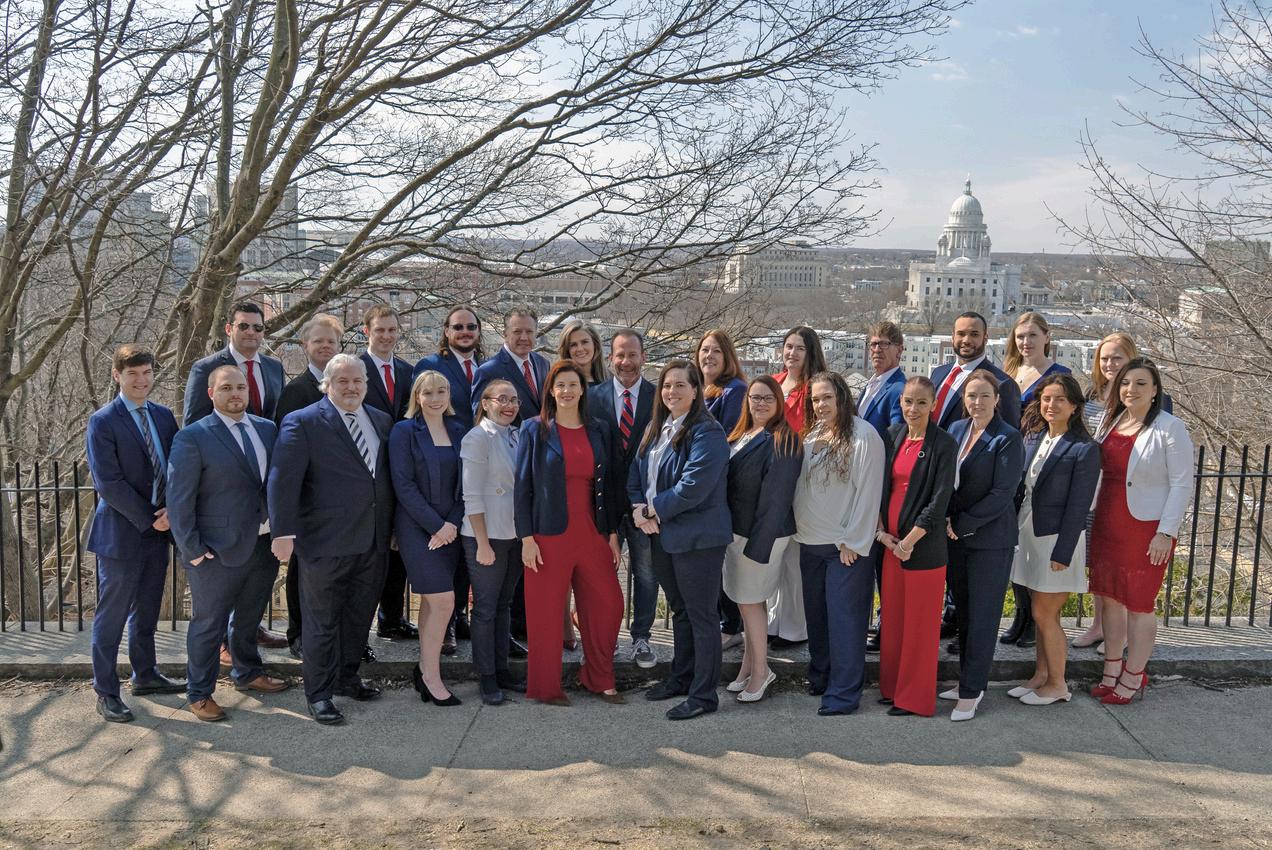
Key Principles in the Book (as explained in the talk):
Buyers are 80% through their decision-making process before they contact you. If you’re not showing up during their research, you're invisible. Content should address the real fears, concerns, and comparisons buyers are already researching.
Honesty and transparency build trust faster than sales pitches ever could. The company that teaches the best, sells the most.
These steps aren’t just theory — they’re the proven, practical strategies that the most successful firms are using to earn trust, increase visibility, and close better cases. And this isn’t something you have to implement alone. This is exactly what we follow, test, and refine together in our mastermind community — sharing wins, solving challenges, and holding each other accountable as we build firms that lead with transparency, value, and results.
This is the caliber of speakers and experts we bring into our mastermind. You’ll have direct access to ask questions and get personalized insights. We follow up as a group weekly to discuss real-world challenges around deploying and executing these strategies. You'll learn firsthand what’s working—from members who are actively implementing these tactics. It’s not just theory—we take action, share results, and collaborate to move faster and smarter together.


